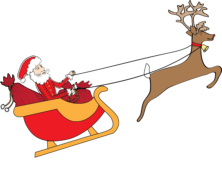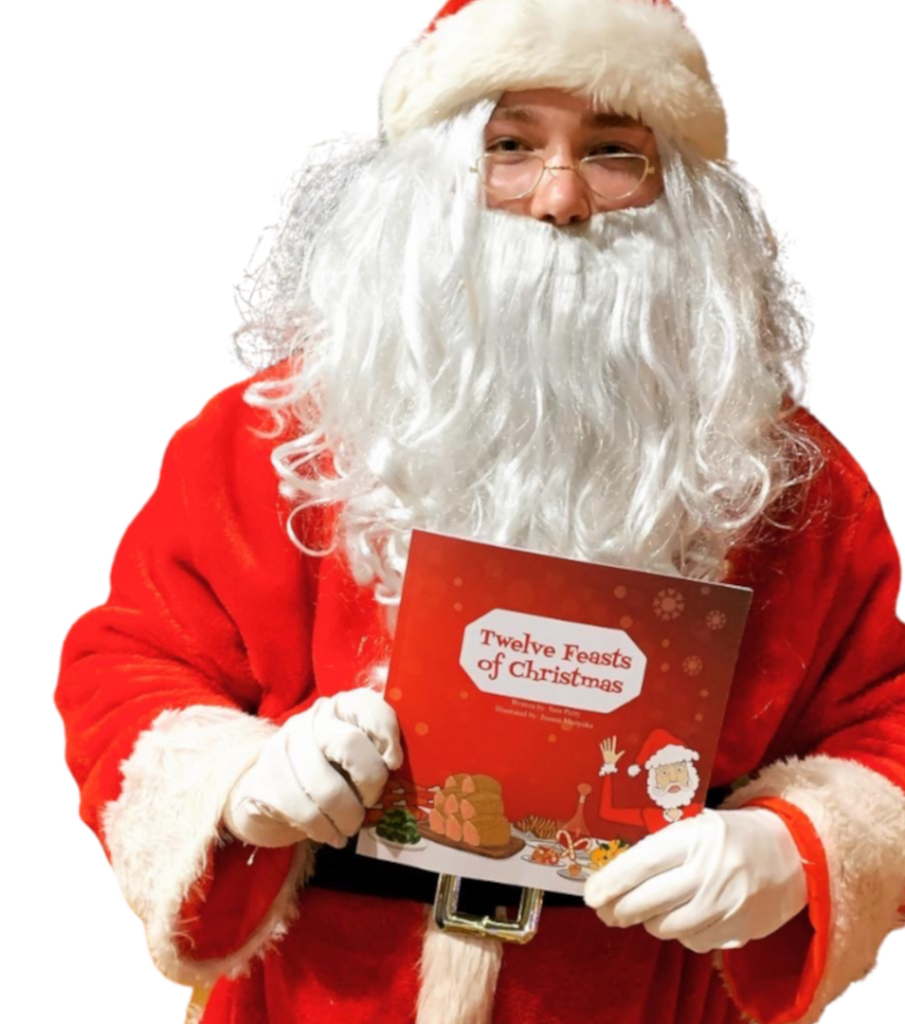
The Twelve Feasts of Christmas: A Celebration of Food and Culture
The Twelve Feasts of Christmas: A Celebration of Food and Culture
The holiday season is a time of joy, love, and gratitude, and what better way to celebrate than with good food and drinks? The Twelve Feasts of Christmas (also known as the Twelve Days of Christmas, Twelvetide, and the title of our children’s picture book) is a traditional celebration observed in many countries around the world, marked by twelve days of delicious meals and drinks. Each feast has its own cultural significance and unique culinary traditions, making it a truly global celebration. In this article, we’ll explore the history and significance of the Twelve Feasts of Christmas, as well as some of the mouth-watering dishes that are enjoyed during this festive season.

Twelve Feasts of Christmas Humorous Children's Picture Book
🎵 In the first house at Christmas the family left for me: A mince pie and a Sherry. 🎵🎶
Inspired by the classic song ‘The 12 Days of Christmas’ and Eric Carle’s wonderful ‘Very Hungry Caterpillar’ this book is perfect to read aloud with your children or grandchildren.
Find out more and purchase
The History of the Twelve Feasts of Christmas
The Origins of the Twelve Days of Christmas
The Twelve Feasts of Christmas is closely tied to the Christian celebration of the birth of Jesus Christ. The holiday season begins on Christmas Day, which is celebrated on December 25th, and continues for twelve days until January 6th, which is known as the Feast of Epiphany. This period is known as the Twelve Days of Christmas, and each day is marked with feasting, gift-giving, and other festive activities.
The Significance of the Twelve Feasts
The Twelve Feasts of Christmas are an important part of many cultures around the world, and each feast has its own unique significance. Some of the most popular feasts include:
Feast of St. Stephen (December 26th)
This feast is named after St. Stephen, who was one of the first Christian martyrs. In many countries, including Ireland, Boxing Day is celebrated on this day, and it is marked by gift-giving and charity.

Feast of St. John the Evangelist (December 27th)
This feast is named after St. John the Evangelist, who was one of the twelve apostles of Jesus. In many countries, including Spain, this day is celebrated with feasting and fireworks.
Feast of the Holy Innocents (December 28th)
This feast commemorates the massacre of the innocent children by King Herod, who was trying to kill the baby Jesus. In many countries, including Mexico, this day is marked by pranks and practical jokes.
Feast of St. Sylvester (December 31st)
This feast is named after St. Sylvester, who was the pope in the fourth century. In many countries, including Germany and Austria, this day is marked by feasting and fireworks to celebrate the New Year.
Feast of the Epiphany (January 6th)
This feast marks the end of the Twelve Days of Christmas and is celebrated in many countries, including Spain and Mexico, with parades and gift-giving.
The Culinary Traditions of the Twelve Feasts of Christmas
The Twelve Feasts of Christmas are also a time of delicious food and drink, and each feast has its own unique culinary traditions. Here are some of the most popular dishes that are enjoyed during this festive season:
Roast Turkey
Roast turkey is a popular dish that is enjoyed on Christmas Day in many countries, including the United States and the United Kingdom. It is typically served with stuffing, gravy, and cranberry sauce.

Tamales
Tamales are a traditional dish that is enjoyed on the Feast of the Holy Innocents in Mexico. They are made from masa, a type of corn dough, and filled with meat, cheese, or vegetables before being wrapped in banana leaves and steamed.
Yule Log
The Yule Log is a traditional dessert that is enjoyed in many countries, including France and Belgium, on Christmas Eve or Christmas Day. It is made from a sponge cake that is rolled into a log shape and decorated with chocolate icing to resemble a log.
Rosca de Reyes
Rosca de Reyes is a sweet bread that is enjoyed on the Feast of the Epiphany in Mexico. It is shaped like a wreath and is decorated with candied fruit to represent the jewels of the three wise men.
Lechón
Lechón is a popular dish that is enjoyed on the Feast of St. Sylvester in the Philippines. It is a whole roasted pig that is stuffed with lemongrass, garlic, and other herbs and spices before being slow-roasted until the skin is crispy and the meat is tender and juicy.
FAQs
What are the Twelve Feasts of Christmas?
The Twelve Feasts of Christmas is a traditional celebration observed in many countries around the world, marked by twelve days of delicious meals and drinks.
What is the significance of the Twelve Feasts of Christmas?
The Twelve Feasts of Christmas are an important part of many cultures around the world, and each feast has its own unique significance.
What are some of the traditional dishes that are enjoyed during the Twelve Feasts of Christmas?
Some of the most popular dishes include roast turkey, tamales, Yule Log, Rosca de Reyes, and Lechón.
Conclusion
The Twelve Feasts of Christmas is a celebration that brings together people from different cultures and traditions around the world. It is a time of joy, love, and gratitude, and what better way to celebrate than with good food and drinks? From roast turkey to tamales to Yule Log and Rosca de Reyes, the culinary traditions of the Twelve Feasts of Christmas are as diverse and delicious as the cultures that celebrate them. So, this festive season, let’s come together and celebrate the Twelve Feasts of Christmas with family, friends, and of course, lots of good food!





